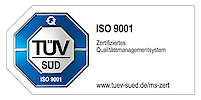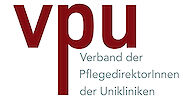In vitro Fertilisation (IVF)
Information on in vitro fertilization
What is in vitro fertilization?
In vitro fertilization, or IVF for short, is a method of artificial insemination using reproductive medicine in which the egg is fertilized outside the female body. It is also known as extracorporeal fertilization or colloquially as a test tube pregnancy.
In vitro fertilization procedure
The IVF treatment is divided into several treatment steps.
Hormone treatment for IVF
First of all, the woman's natural ovulation must be prevented during IVF. This is done via the so-called downregulation, in which the woman is given GnRH antagonists via a hormone injection to prevent premature ovulation. The actual hormonal stimulation begins approximately 14 days later. The aim of this stimulation is to allow as many eggs as possible to mature so that they can be extracted later.
The hormone preparations can be injected intramuscularly (into the muscle) or subcutaneously (under the skin) or administered orally (through the mouth) in tablet form. Synthetically produced FSH (follicle-stimulating hormone) is usually used. One week after the hormone therapy, the eggs are examined for their size and maturity, using the hormone levels in the blood and ultrasound examinations. If the eggs are capable of fertilization, the administration of FSH is stopped and ovulation is initiated by administering human chorionic gonadotropin (hCG).
Follicular puncture during IVF
Around 36 hours after ovulation, the eggs are extracted from the follicles using a special needle; this is known as follicle puncture. This procedure is usually carried out via the vagina and closely monitored by an ultrasound image. The woman undergoes a short general anesthetic.
Sperm donation during IVF
After the egg puncture, the man's sperm should be as fresh as possible. In special medical facilities, he can induce ejaculation in a room by masturbating. If the man has difficulty ejaculating on command, this can also take place at home and the sperm can be brought to the clinic in a special container. The condition is, however, that the journey to the clinic must not be too far. If the man has a severe form of fertility disorder, the sperm cells can also be taken through a scrotal biopsy, in which tissue is taken from various parts of the testicle and examined for sperm cells that are capable of fertilization.
Sperm preparation
If the man's sperm is available, it is first prepared in such a way that its ability to fertilize is improved and rejection reactions in the woman are minimized.
Combining sperm and egg: In-vitro fertilization
In the next step, the prepared sperm cells and eggs are combined in a special test tube so that artificial insemination can take place, in-vitro fertilization.
If two so-called pronuclear stages have developed under the microscope, fertilization was successful. Now the fertilized eggs can be selected, which will later be implanted in the woman's uterus. The remaining fertilized eggs are either discarded or can be frozen using cryopreservation and reused at a later date.
Inserting the embryos into the uterus
If the two pronuclear stages have now fused together, the embryo has been created. In the best case scenario, two to three embryos are now implanted directly into the uterus around four to five days after the egg collection. This is done in a short, painless procedure using a catheter, a thin plastic tube, through the woman's vagina into the uterus.
To make it easier for the embryo to implant in the uterus, so-called assisted hatching can be used. Special enzymes help to dissolve the vitreous membrane (zona pellucida) of the embryo, making implantation in the uterus easier. The danger here, however, is that the embryo can be damaged.
Pregnancy control after IVF
A good two weeks after the implantation of the embryo or embryos in the uterus, the hCG level in the blood can be used to determine whether a pregnancy has occurred, as this hormone is released in greatly increased amounts during an existing pregnancy. Several follow-up examinations should help with this. After about a month, the ultrasound image shows whether the embryo is alive and whether it is a multiple pregnancy.
What are the chances of success of in vitro fertilization?
The German IVF Register puts the success of IVF births at 23.4 percent in the 2021 brief statistics. The type of fertility disorder
Cost of treatment
The cost of IVF treatment is around €13,000 including medication. The requirements are:
- The couple is married
- Both are older than 25 years
- The woman is younger than 40, the man younger than 50 years
- The infertility has been diagnosed by a doctor and the prospects of success of fertility treatment have been certified
- Only the couple's eggs and sperm are used
- Medical or psychosocial counseling has taken place
Which doctors and clinics are specialists in in vitro fertilization?
Diagnosis, advice and treatment for unfulfilled desire to have children is carried out in reproductive medicine centers, also known as “fertility centers”. Various professional groups work together there. From a medical perspective, the specialist areas of gynecology and obstetrics, as well as urology, are particularly represented.
If the desire to have children is unfulfilled, the affected couple wants the best medical and psychological care. That is why the couple asks themselves, where can I find the best fertility clinic or the best fertility center in Germany for artificial insemination?
At the University Hospital Bonn you will find the best doctors with many years of experience.
















